This one started life with me over a year ago. It was my birthday and as a present to myself I made a couple purchases from Craigslist (back when there was no pandemic and I had contact with other humans). One of the purchases is still sitting out in my garage but this one got worked on first.
So the amp started its life in the early 70’s as a Carvin ST2400. These were 125 Watt solid state heads and looked like this.
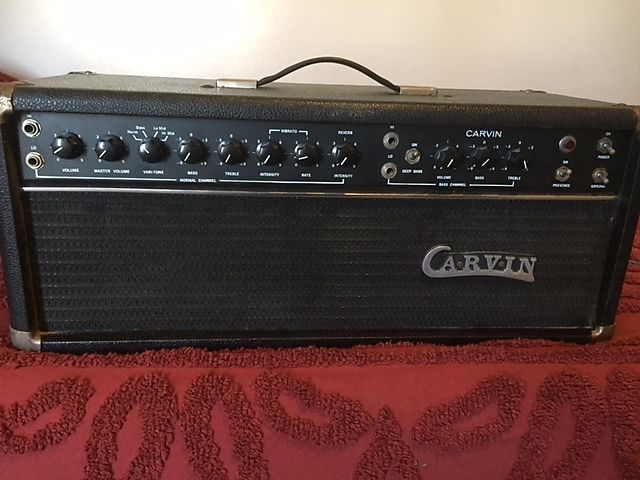
Mine did not look quite like that.
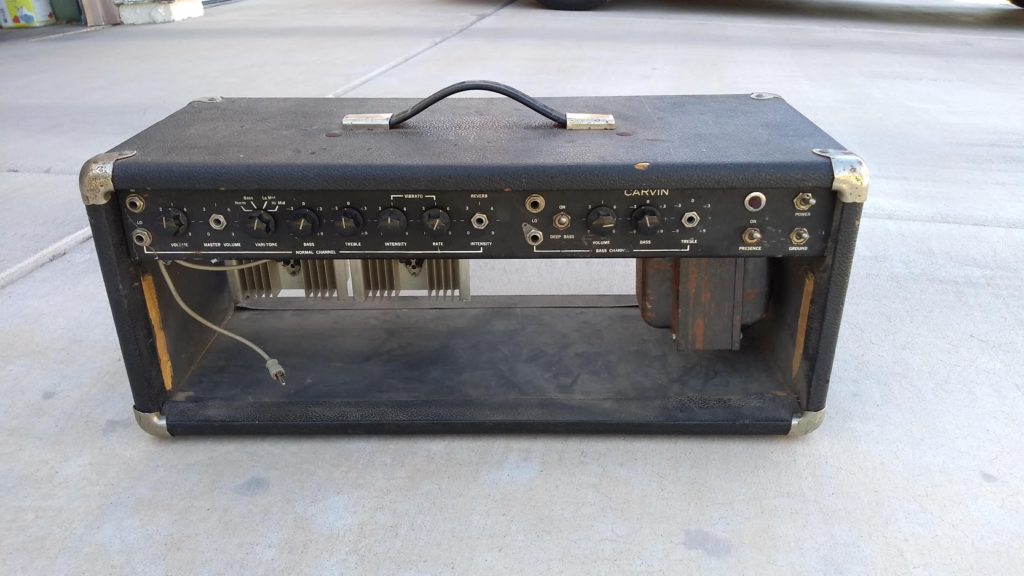
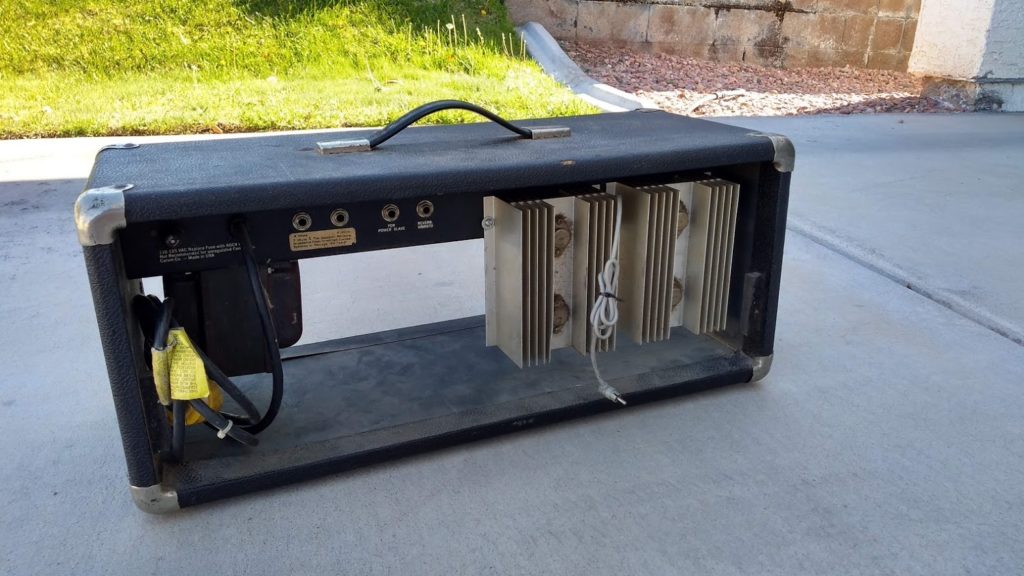
It was a little decrepit but I could see that it was a good candidate for a conversion to a tube amp.
I spent a little time trying to decide what to build but eventually decided to build something along the lines of a Selmer Zodiac Twin 30. I won’t go into all the details but I eventually built it using an dual triode wired in a cascode arrangement instead of the EF86 becasue I didn’t want to deal with microphonics. I don’t now if that was my downfall but I never really liked the amp wired up that way.
So the other thing I had been thinking about was something along the lines of an E-series Fender like a 5E7. I remembered listing to clips of the Dr. Z Galaxy, which is based on the 5E7 and really liking them.
So this was my new plan. Much of the Zodiac carried over including everything from the phase inverter back and the tremolo.
So on that tremolo, the basic design comes from the Vibro Champ. I had use the design before so with this amp I wanted to try and over come some of the problems I had encountered before. The main issue was when the tremolo was on the volume dropped. I found this really annoying and wanted to fix that. So on the third triode, the one before the PI, I changed the plate resistor to 220k, instead of 100k. Then I split the cathode resistor into two, a 1k and a 1.5k. With the 220k plate I’m trying to keep the biasing sorta close to what it was before. The presence and NFB connect above the 1.5k resistor like they do in the stock 5E7. I fix the volume difference by using a switch that turns on the tremolo and also adds a bypass cap on the 1k resistor. This adds just enough volume boost to make up for the tremolo. Problem solved!
Using Duncan’s tone stack calculator I attempted to figure out how to add a mid control but wasn’t too successful. Instead I added a mid switch that changes the value of the treble pot which does give a mid cut. It’s not perfect but it does fill that extra hole in the chassis.
I considered keeping the PI and output section more like a 5E7 but I decided to add my usual tweak like the 1M resistor before the PI, the 47k grid stoppers and connecting the “lower” output coupling cap not right at the cathode of the PI.
I tried a couple master volume with this amp. Post PI and right before the PI but I like it better with the master before the third triode. I could get more gain with the other designs but they didn’t sound as good to me.
I went cathode bias on the power tubes to try and bring the volume down a bit and I hadn’t done a big bottle, cathode biased amp yet. It’s not biased too hot. I tried hotter but it didn’t sound good to me. If I remember correctly it’s around 75%.
The output transformer is a Hot Rod Deluxe replacement wired for an 8.4k load and the power transformer is a Antek AS-2T300.
If you haven’t guessed the amp name is a take off on Philco and the fact that the amp can get a bit raunchy.
This is the schematic…(click for bigger)
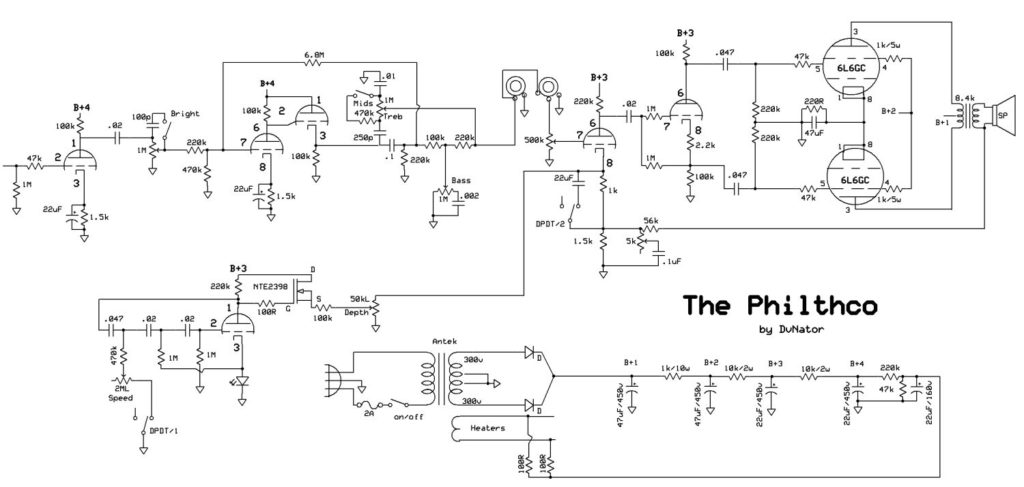
This is a pick of the finished chassis. My daughter is an airbrush artist and did the design.
Note:This is when it was the Zodiac with EL34s.
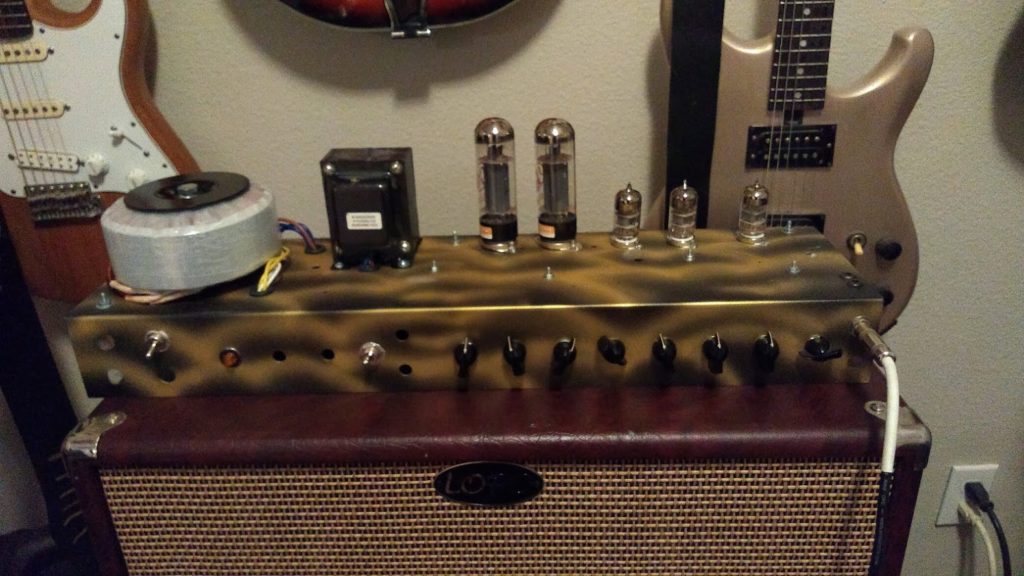
Below is with the 6L6GCs. The light towards the middle of the chassis is the LED for the tremolo bias that blinks in speed.
I also flipped the cab so it’s now tubes up.
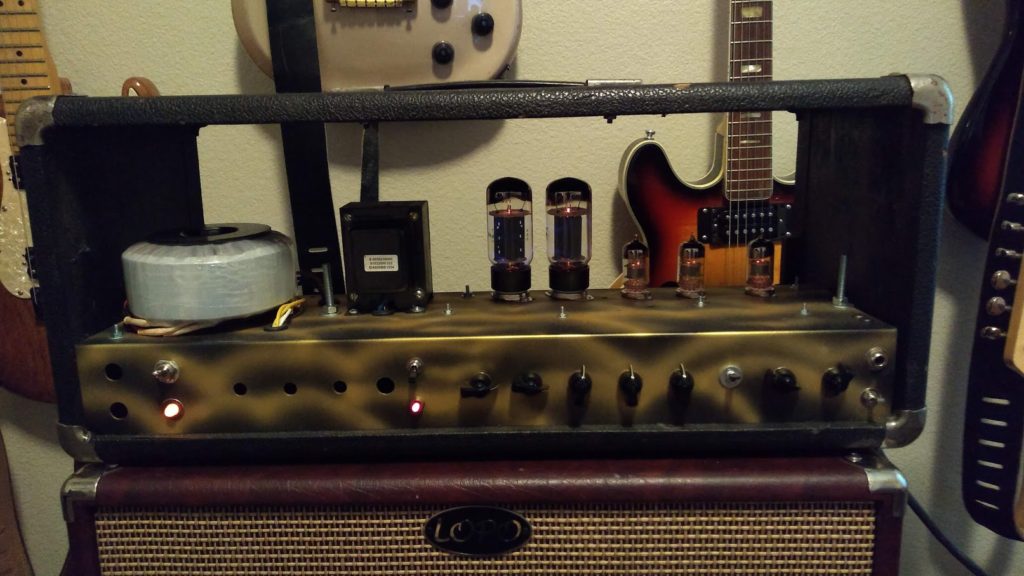
Being in pandemic lockdown with my family does not lend itself to doing amp clips but hopefully I’ll get one done at some point.
Leave a Reply
You must be logged in to post a comment.